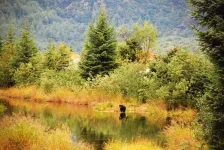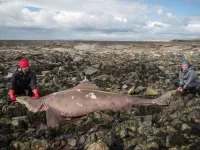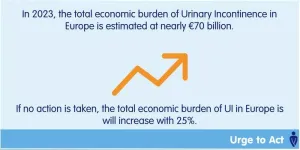(Press-News.org) CORVALLIS, Ore. – Analyses of U.S. national forests led by Oregon State University scientists shows that increased protections for two Alaskan forests is a key to meeting climate and biodiversity goals.
In a paper published in AGU Advances, OSU College of Forestry researchers make the case that greater conservation efforts in the Tongass and Chugach national forests in southern Alaska are crucial because of their landscape integrity, high carbon stocks and wildlife habitat extent.
“More thoroughly safeguarding those forests from industrial development would contribute significantly to climate change mitigation and species adaptation in the face of the severe ecological disruption that’s expected to occur over the next few decades as the climate rapidly gets warmer,” said Oregon State’s Bev Law, who co-led the study.
At 16.7 million acres, the Tongass is America’s largest national forest. The Chugach is the second-largest at just under 7 million acres.
Not only are they the biggest national forests, they are the most intact, Law said, and provide habitat for iconic, keystone species such as the bald eagle, brown bear and gray wolf.
“Those forests are also cool and wet, with carbon stocks that are only minimally affected by wildfire, stocks that are likely to increase as the climate changes,” she said. “Protecting the Tongass and Chugach is a high priority if we want to have a chance to attain global goals relating to climate and diversity of species.”
Law and collaborators in the College of Forestry teamed up with researchers at Southern Oregon University, the Woodwell Climate Research Center and EcoSpatial Services L.L.C. to look at 152 national forests and compare them in terms of carbon density and accumulation, total biomass carbon stocks, habitat for eagles, bears and wolves, and landscape integrity – defined as degree of modification by humans.
The authors report that almost 31% of all high-landscape-integrity area found in national forests – areas with minimal or no human modification – is in the Tongass and Chugach, at 25.3% and 5.6%, respectively.
Those forests also combine to account for nearly half of all bald eagle habitat available in national forests, 37% of brown bear habitat and 18% of gray wolf habitat – no other location has more than 4% of the total wolf habitat found in the U.S. inventory of national forests. All three species were once widespread and abundant across much of North America.
“Forests play an incredibly important part in trying to mitigate climate change and support biodiversity,” Law said. “For six decades, ecosystems on land have annually been removing roughly 30% of all the carbon dioxide humans have been putting into the atmosphere, and forests do most of that work. But intact forests with high carbon density and high biodiversity are disappearing at a frightening pace, lost to agriculture, logging and other industries, and development.”
In addition to sequestering carbon and providing wildlife habitat, intact forests provide a range of ecosystem services, including helping to keep water clean, the authors note. And in the quest to establish nature-based climate solutions, public lands have outsized importance because they are more likely than private lands to afford more stable carbon storage.
Still, at present, federal forest lands are caught up in a numbers game, and conservation has some ground to make up on the scoreboard, Law said.
“National forests account for 76% of all federal forest land, but logging and other industrial activities are allowed throughout most of that, with only about 19% classified as reserved in one way or another from timber production,” she said. “That means there is a substantial gap between current preservation and the preservation targets for protecting biodiversity and carbon stocks.”
Ramping up protection in the Alaskan forests offers a big opportunity for closing that gap, the authors point out. Right now, 35% of the Tongass is protected at the two highest levels as categorized by the U.S. Geological Survey and the International Union for Conservation of Nature, and 57.6% of the Chugach.
“Those two forests have historically been wetter and cooler than most national forests, and over the next 100 years they are projected to have much larger increases in precipitation and much lower increases in maximum temperatures,” Law said. “Combined with a relatively low occurrence of wildfire, that makes preserving these forests in their intact state highly possible – if there is the political will to take bold action.”
William Ripple and Christopher Wolf of the OSU College of Forestry contributed to this research, which was co-led by Logan Berner of EcoSpatial Services. Berner earned a Ph.D. under Law at Oregon State.
END
Southern Alaska’s national forests key to meeting climate, conservation goals, OSU study shows
2023-11-08
ELSE PRESS RELEASES FROM THIS DATE:
Experts predict ‘catastrophic ecosystem collapse’ of UK forests within the next 50 years if action not taken
2023-11-08
PRESS RELEASE FROM THE UNIVERSITY OF CAMBRIDGE AND FORESTRY ENGLAND
EMBARGOED UNTIL 00:01 GMT/LONDON TIME ON WEDNESDAY 8 NOVEMBER 2023
A copy of the paper is available at: https://drive.google.com/drive/folders/1oj1uPIh_R0D_SA9wHtaaoz_NG26SicI4?usp=drive_link
A team of experts from across Europe has produced a list of 15 over-looked and emerging issues that are likely to have a significant impact on UK forests over the next 50 years.
This is the first ‘horizon scanning’ exercise – a technique to identify relatively unknown threats, opportunities, and new trends – ...
Virtual/augmented reality playkit eases kids’ and parents’ anxieties ahead of MRI scan
2023-11-08
Giving children a virtual/augmented (mixed) reality playkit to use ahead of an MRI (magnetic resonance imaging) scan seems to ease both their and their parents’ anxieties about this procedure, suggest preliminary findings published in the open access journal BMJ Innovations.
Reducing the need to put a child to sleep, because of the noise and time required to keep still while in the MRI tunnel, could not only boost patient safety, but also cut costs and waiting times, suggest the researchers.
MRI has emerged as an important diagnostic tool in children’s healthcare because of the high quality images produced and lower radiation ...
Three-fold rise in babies born at 22 weeks given respiratory life support in England and Wales after guidelines change
2023-11-08
The number of very premature babies (22 weeks) given respiratory life support (survival focused care) and/or admitted to neonatal units in England and Wales has increased 3-fold, following changes in 2019 to national guidance, finds research published in the open access journal BMJ Medicine.
While the proportion of these babies surviving to discharge has also increased, overall survival remains low, and there are “major implications for additional resource needs,” highlight the researchers.
The updated national guidance from the British Association of Perinatal Medicine focuses on a risk based approach, setting out various pregnancy and ...
Why a surprising discovery, warming seas and the demise of the ‘Meg’ may spell trouble for more and more sharks
2023-11-08
Some unexpected shark strandings and subsequent surprises following autopsies have, ironically, taken marine biologists millions of years back in time as they look to the future with concern. Adding chapters to an evolutionary tale involving the infamous megalodon shark (the “Meg”), they think their work suggests there are more warm-blooded sharks out there than previously believed, and – based on the Meg’s demise – these species may be at great risk from warming seas.
Some of the most ...
The annual economic burden of urinary incontinence could reach €87 billion in 2030 if no action is taken
2023-11-08
Brussels, 8 November 2023 – New international research on the economic burden of urinary incontinence reveals that the cost of continence care will reach an estimated €69.1 billion in 2023. These costs include the impact of incontinence on individuals’ health, the costs of medical consultations and products such as continence pads, incontinence-related absenteeism at work, nursing home admissions, and the environmental impact of incontinence care. If no action is taken to support continence health, the economic burden could rise by 25% in 2030, to €86.7 billion. This economic burden becomes considerably higher when including caregiver costs.
Some 55-60 million ...
Researchers say AI model accurately identifies, predicts joint damage in hand X-rays
2023-11-07
ATLANTA — New research at ACR Convergence 2023, the American College of Rheumatology’s (ACR) annual meeting, shows that a deep learning system could accurately identify and predict joint space narrowing and erosions in hand radiographs of patients with rheumatoid arthritis (RA) (Abstract #0745).
Radiographs are the most commonly used imaging technique for detecting and monitoring RA in the hand. Radiologists frequently use the well-validated Sharp/van der Heidje (SvH) method to evaluate joint space ...
Study finds acute calcium pyrophosphate deposition arthritis doubles fracture risk
2023-11-07
ATLANTA - Researchers will present the first-ever study of fractures and calcium pyrophosphate deposition disease at ACR Convergence 2023, the American College of Rheumatology’s (ACR) annual meeting. They report a doubled risk of fractures in patients with acute calcium pyrophosphate crystal arthritis compared to those without the disease (Abstract #0235).
Calcium pyrophosphate deposition (CPPD) disease occurs when calcium pyrophosphate (CPP) crystals form near cartilage cells, and sometimes leads to joint inflammation, pain, and swelling. It has often been called pseudogout because ...
Education key to curbing antimicrobial resistance in cats
2023-11-07
ITHACA, N.Y. -- Better education for cat owners, more communication from veterinarians, increased drug choices and cheaper, rapid diagnostic tools can help improve antimicrobial use in cats, which has important implications for rising antimicrobial resistance in animals and humans, according to two new papers by Cornell researchers.
Antimicrobial resistance threatens up to 10 million human lives a year and may cost the global economy trillions of dollars, with resistant pathogens moving easily between humans and animals, according to the papers’ authors.
In one paper, “Divergent Veterinarian and Cat ...
New compound shows early promise for treatment of Lou Gehrig’s disease in preclinical models
2023-11-07
In science, a simple but thorough observation can kick-start the most surprising findings. Researchers at the Hollings Cancer Center at the Medical University of South Carolina noticed that mice lacking a protein of interest in cancer research were showing visible signs of abnormal motor functions as they aged, including loss of coordination and strength. The team showed that that lack of this protein resulted in the accumulation of damaged mitochondria that affected motor function. Treating these mice with a drug that triggered the destruction of damaged mitochondria restored their motor ...
Diverse task force develops new quality measures to improve lupus care by 2030
2023-11-07
ATLANTA — Leaders of a project to develop and implement equitable new quality measures for lupus care by the end of the decade will present their work at ACR Convergence 2023, the American College of Rheumatology’s (ACR) annual meeting (Abstract #1899).
Systemic lupus erythematosus (SLE, lupus) is an autoimmune disease marked by adaptive immune system activation, formation of autoantibodies, and systemic inflammation affecting organ systems throughout the body. Lupus disproportionately affects women and people of color, who are more likely to have severe ...



